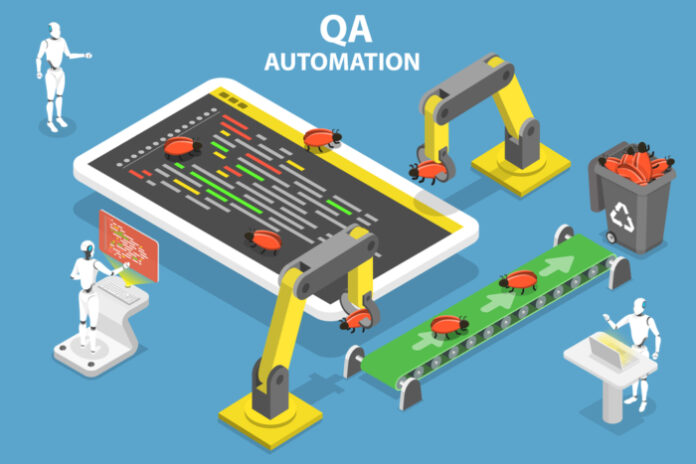A software development lifecycle necessitates software testing as it ensures that applications work as intended and satisfy the appropriate quality standards. Manual testing has been the standard for decades together. But with the extensive rise of intricate software systems and a need for quicker releases, manual testing is no longer adequate. Quality Assurance (QA) automation, in this context, improves productivity, test coverage, and ultimate software quality by automating monotonous and laborious testing operations.
Read ahead to know more about the primary benefits of QA automation and how it may improve software testing operations.
Benefits of QA Automation
Automating Test Execution
Manual testing is the process of carrying out test cases using human testers, which may be tedious and susceptible to human error. By automating the implementation of test cases, QA automation reduces these disadvantages. Test scripts are designed to imitate user actions, interactions, or data input. These scripts tend to run frequently, assuring consistent and dependable test execution. This process thus decreases the time and effort necessary for testing by automating repetitive operations, hence increasing testing efficiency.
Increased Testing Coverage
Manual testing is frequently constrained by time restrictions and resource availability, resulting in restricted testing coverage. Because test scripts can be run repeatedly across numerous settings, configurations, and data types, QA automation enables a broad testing coverage. This guarantees that a wide range of situations and edge cases are tested, improving the possibility of detecting any flaws or defects. QA automation improves overall software quality by finding errors that might otherwise go undetected.
Speedy Time-to-Market
Businesses want to put out products that have been thoroughly tested in a timely manner. For example, quality electronic design services ensure rigorous testing protocols to guarantee the reliability and performance of developed electronic components and systems. On top of that, in the contemporary world, companies seek to test and deploy software upgrades and new features as soon as possible. Manual testing might be a hurdle in obtaining a faster time-to-market. QA automation speeds up the testing process by conducting tests in parallel, performing them across various environments, and decreasing the need for human interaction. Automated tests may be linked into Continuous Integration/Continuous Deployment (CI/CD) pipelines, providing immediate feedback on the software’s reliability and readiness for deployment. QA automation allows firms to fulfill tight deadlines and remain ahead of the competition by expediting the testing process.
Accelerated Regression Testing
Regression testing, involving retesting previously tested functionality to ensure that they continue to perform as intended, is an important component of software maintenance. Manual regression testing may be time-consuming, particularly when software complexity rises. QA automation simplifies and speeds regression testing by rerunning automated test scripts whenever software changes are performed. This guarantees that current functionality isn’t harmed by future upgrades or bug patches. By automating regression testing, QA automation decreases the probability of adding regressions and enables developers to dedicate themselves to innovation rather than repeated human testing.
Reliable and Repeatable Outcomes
One of the primary benefits of QA automation is the ability to produce consistent and reproducible test results. Manual testing may result in discrepancies in test execution owing to human variables such as weariness or inconsistent test data. Automation reduces these factors, ensuring that tests are conducted regularly and produce consistent findings. This dependability enables accurate bug tracking, improves effective communication between developers and testers, and aids in swiftly detecting and addressing bugs.
Challenges and Best Practices
While QA automation has various advantages, there are some obstacles that must be overcome for successful adoption. It necessitates professional automation engineers who are fluent in test automation frameworks and programming dialects. Furthermore, test cases must be carefully chosen for automation, taking into account characteristics such as frequency of implementation, complexity, and durability. Maintaining test scripts as the product changes is also critical to ensuring their efficacy.
To leverage the benefits of QA automation, businesses should adopt best practices such as:
- Comprehensive Test Automation: Select appropriate test cases for automation based on their effect, complexity, and frequency of execution. Target high-value test cases that cover key characteristics.
- Automation Frameworks: Use test automation frameworks that provide solid functionality, ease of maintenance, and scalability. When considering options, it’s important to evaluate the strengths of different tools, such as comparing Playwright vs Selenium. Selenium, Appium, and Robot Framework are popular frameworks for online and mobile application testing.
- Collaboration and Communication: Encourage collaboration among developers, testers, and automation engineers. Effective communication aids in understanding requirements, finding potential test situations, and quickly resolving concerns.
- Continuous Integration: Integrate automated tests into CI/CD pipelines to enable frequent and early testing. This guarantees that possible issues are identified and rectified at an early stage, lowering the danger of mistakes sneaking into production.
To Sum Up
QA automation is a game changer in software testing, increasing efficiency and quality by simplifying test execution, enhancing testing coverage, and speeding up the whole testing process. Automation enables firms to achieve faster time-to-market, improve regression testing, and produce consistent and reproducible outcomes. By addressing the difficulties and applying best practices, organizations may use QA automation to provide high-quality software, decrease the time and effort spent on testing, and ultimately fulfill consumer expectations in today’s competitive market.
Find a Home-Based Business to Start-Up >>> Hundreds of Business Listings.
















































